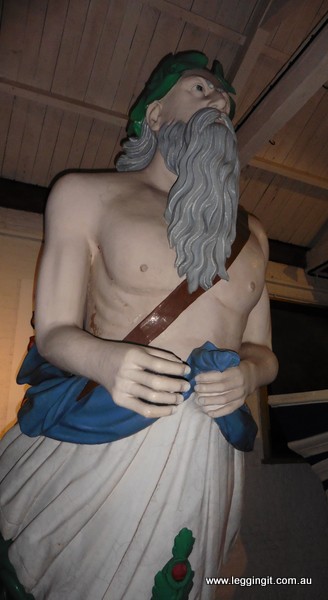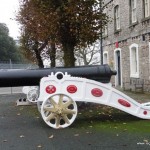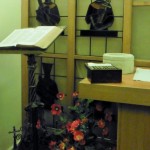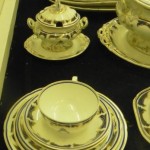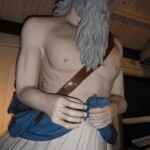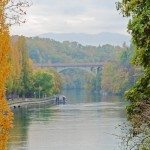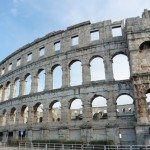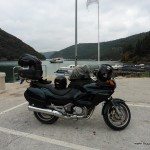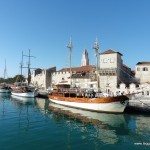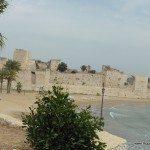We could never have known our day would end with us seeing ships, a synagogues and meeting an Unsung Hero
Once again it was dense fog as we boarded the bike bound for Plymouth to visit The Devonport Naval Heritage Museum and the Plymouth Synagogue.
The satnav was telling us that it was 60 km’s away but we’d been told the ferry from Tor Point to Devonport would cut that distance down considerably. The ferry only took about 10 minutes and it only took us another five minutes to arrive at our destination.
We were met by one of the Devonport Naval Heritage Museum volunteers named John who ushered us inside to start our tour by showing us the development of dockyard on a model. He explained the development of Devonport and Plymouth from the days of Francis Drake until now.
It was interesting hearing how the town developed over the years around the dockyard with trains running down to the docks, and buildings popping up to house all the workers.
Then it was on to the old fire station buildings where some of the largest Figureheads we’ve ever seen are stored. The volunteers have down a fantastic job restoring and repainting them. There were lots of models of ships in the different buildings with each area displaying a different era of ships ranging from sails, steam and sails, through to dreadnoughts and modern warships.
The display of Drakes Armada was fascinating. His fleet was trapped inside Devonport by the winds and currents with the Spanish Armada off the coast. He was playing bowls and when told about the Spanish off the coast, coolly remarked “there’s plenty of time to finish this game and defeat the Spanish” A bit of bravado perhaps but after his game the English fleet were towed out by rowboats and getting the advantage of the wind defeated the Spanish, with their smaller, faster fleet. The Spanish Armada faced further destruction in a gale which blew up the next day.
In the days of sail room there’s a mock gun deck where people can get a glimpse of life on an old warship. There’s also a few interactive displays such as block and tackles for kids to feel what it’s like hauling on a rope, and cannon balls to lift to feel how heavy they are.
There were displays of uniforms, through the years and rate badges from 1909-2009. There was also a display of China with the crests of Queen Victoria, King George V, Queen Elizabeth II, fine crystal ware and silverware.
In the Submarine section there’s lots of photos and stories of the different submarines which have been built in Devonport. There’s also lots of models, even a working periscope and lots of photos taken by submarines through their periscopes.
One interesting fact we discovered was that when shipbuilders were in the process of selling a new ship they’d make a Builders model. They had one about the length of a canoe which was a mock up of the Warspite, the largest ship built at the dockyard. It’s actually been classified as a heritage piece due to its age and rarity.
The new ship section was fascinating for Ron, as many ships he’d worked with were on display and there’s stories of the newest ship being built HMS Queen Elizabeth, a massive aircraft carrier.
The museum also tells the stories of the effects of the blitz on the city and the dockyard, the stories of disasters, wars, battles, building, destruction, tragedies and triumphs. Many of the stories told aren’t of major conflicts but of little sidelines in history which are often ignored. All of these stories however have one thing in common the ships, the sailors, the dockyard workers, the city are all tied to this dockyard.
It was a fascinating tour with so many displays, which we could’ve spent a few days to discover. The museum is completely staffed by volunteers who apart from guiding tours, maintain the displays and continue improvements. It’s open by appointment and on open days, you can contact them via their website here
We were really glad to have the museum to ourselves to appreciate the displays. Once again thanks John and the museum for allowing us access.
We then headed to the Plymouth Synagogue
